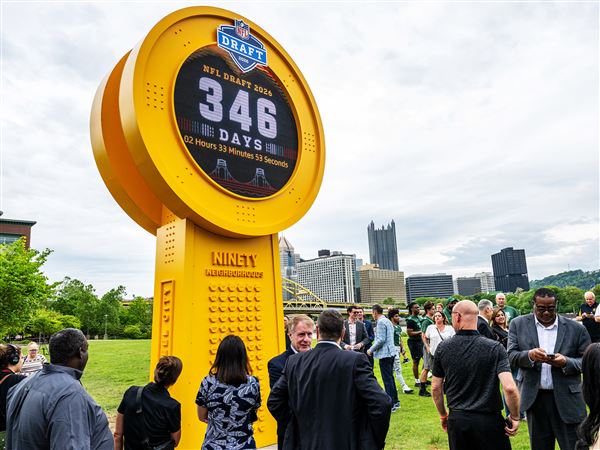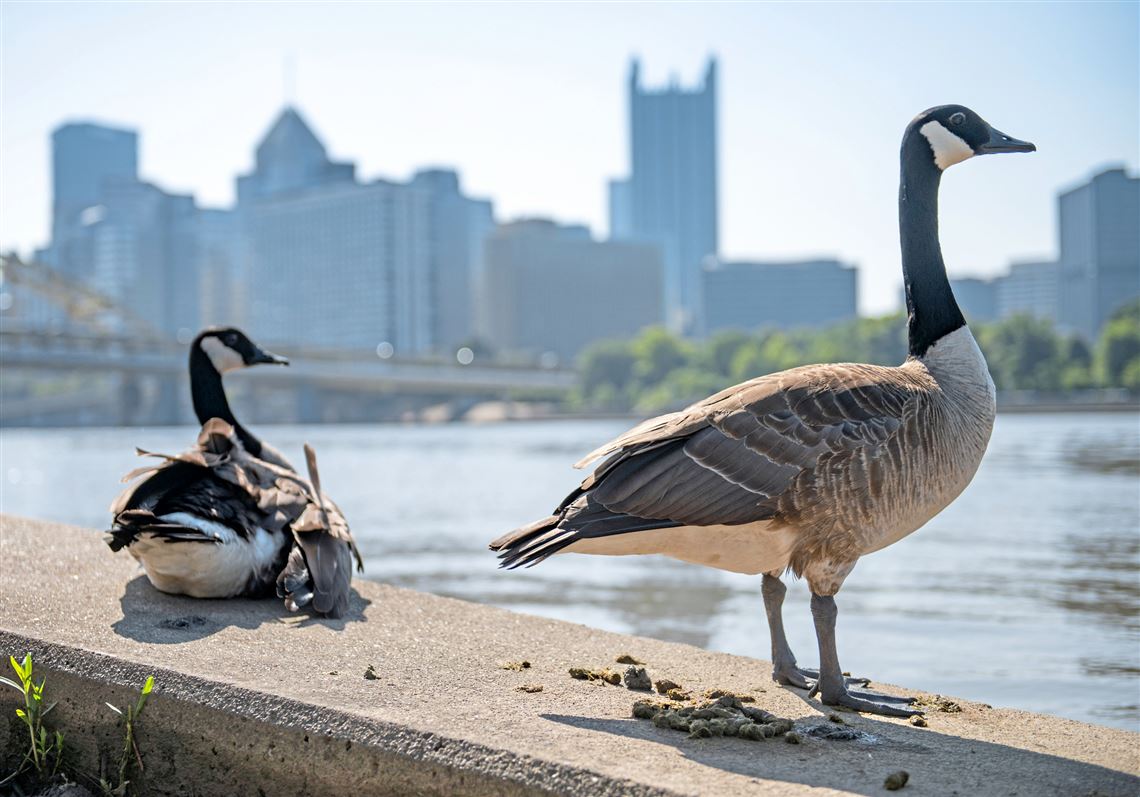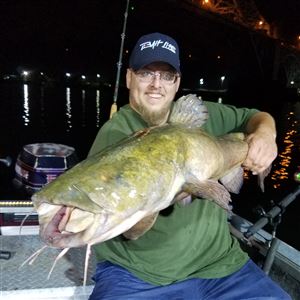Perhaps the most attractive stretch of Pittsburgh’s public riverfront is the narrow strip of landscaped shoreline between Heinz Field and PNC Park on the Allegheny River’s North Shore.
Well-trafficked by runners, walkers and bicyclists, Northshore Riverfront Park includes part of the Three Rivers Heritage Trail, the Bill Mazeroski and Mister Rogers’ statues, Korean War Memorial, Vietnam Veterans Monument, Law Enforcement Officers Memorial, two sparkling water features and according to those who frequent the park this summer — too much goose poop.
“It’s disgusting. Look at this,” said Merle Hiber of Brookline Monday, during his daily hike from a North Shore parking lot to his office. He pointed to a long skid mark left by a pedestrian who slid through one of nature’s little landmines. “Can’t they at least sweep it off the sidewalk?”
A month ago it was easier for pedestrians to avoid goose droppings on the urban walkway. Normally it’s patrolled by the Geese Police of Western Pennsylvania, a private company that legally brings trained dogs to herd the problem geese into the air or water. Their work, however, has been temporarily curtailed by a state regulation that bans dog owners from allowing their pets to chase or harass birds during their flightless molting season, June 16 to July 20. That means more geese on the walkway and more of all that the geese leave behind.
“After their eggs hatch and the little ones have gotten to almost adult size, the geese molt,” said Dan Bowen of the regional Geese Police. “When birds are molting — when their feathers fall out and new ones are growing in — they’re incapable of flying. The regulation is to keep the dogs from catching them and killing them.”
Migrating waterfowl are carefully conserved by an international agreement that regulates waterfowl hunting in Canada, the United States and Mexico. The molting protection is an additional regulation of the state Game Commission.
Goose droppings carry more than an “ick” factor. A webpage from the Centers for Disease Control and Prevention warns that humans can be infected by a wide variety of pathogens that might be found in bird droppings. Goose scat, in particular, might contain germs such as E. coli, salmonella, campylobacter, or cryptosporidium. Pets can contract leptospirosis, a bacterial infection, just from lapping water from a puddle contaminated with goose droppings.
A Canada goose eats up to 4 pounds of grass, and while feeding empties its cloaca every 7 to 7½ minutes creating 3 pounds of fecal matter daily. No one knows how many geese congregate along the North Shore.
“Too many, “ said Mr. Hiber, as he stood near Jerome Bettis’ Grille 36.
The Sports and Exhibition Authority pays Mr. Bowen to control geese in the North Shore park. He works with border collies, which are trained to circle around behind the geese. Instead of chasing, they stare the geese down with a menacing look that sends the gaggle waddling back toward Mr. Bowen on shore or in a kayak, who guides the birds off the park land.
“It’s not like an exterminator. It’s conditioning of the geese,” said Mr. Bowen. “In time the geese learn that it’s unpleasant when they come to this spot and they stop going there.”
Another tactic used by Geese Police is called addling. Eggs are removed from Canada goose nests and covered with oil to deprive the embryo of oxygen. When the egg is unviable it is replaced in the nest. The U.S. Fish and Wildlife Service is so confident in addling it will soon relax requirements for acquiring an addling permit.
Mr. Bowen said Geese Police of Western Pennsylvania is licensed to use dogs to control geese in seven counties. In addition to the Sports and Exhibition Authority, his clients include universities outside of Pittsburgh and some corporations with large properties.
Resident Canada geese create social and sanitary problems throughout the state. Ian Gregg, Game Commission wildlife services division manager, said biologists estimate there are about 100,000 more resident geese than Pennsylvania can accommodate.
“The definition of resident geese is those that nest here,” he said. “There’s a misconception that resident geese used to migrate but stopped when they found a place where people will feed them. Most of the geese nest in Canada. But we’ve found a [distinct population] of Canada geese that doesn’t have the natural instinct to migrate.”
Goose control starts at the federal level. In 1918 conservationist hunter groups lobbied Congress to pass the Migratory Bird Treaty Act, which sets a framework for how many waterfowl of each species can be harvested in each state and province in Canada, the United States and Mexico. It was followed by the federal Migratory Bird Conservation Act of 1929, which raises money through the sale of waterfowl hunting permits, commonly called duck stamps, to purchase nesting and grazing habitat throughout North America.
Individual states control resident geese through hunting. In Pennsylvania two special resident goose hunting seasons are scheduled each year. Mr. Gregg said that 75,000 to 100,000 Canada geese are shot in Pennsylvania annually.
County responsibility for Canada goose control is limited to county parks, where problems with excess geese are evident. The Allegheny County parks system has a policy regarding goose control.
“We take a number of proactive steps to manage the resident geese in our parks including efforts to limit repopulation and methods to move geese to less populated areas in the parks,” said Andy Baechle, parks director.
Goose droppings are just about everywhere along Pittsburgh’s rivers and some parks. A spokesman for Pittsburgh Citiparks said each park manager is responsible for controlling its own problem geese.
Fortunately, cyclists and pedestrians along the North Shore will have to endure these goose minefields for just a few more days. The Geese Police will return on Monday.
John Hayes: 412-263-1991, jhayes@post-gazette.com.
First Published: July 16, 2019, 12:00 p.m.

















